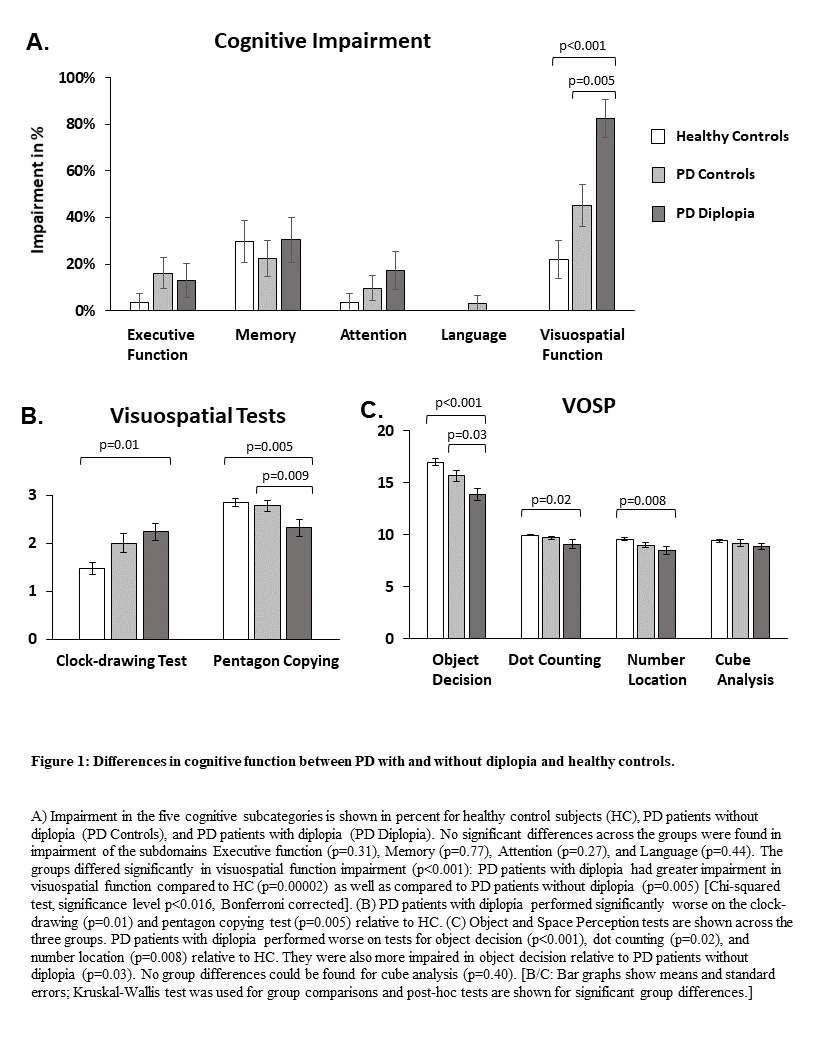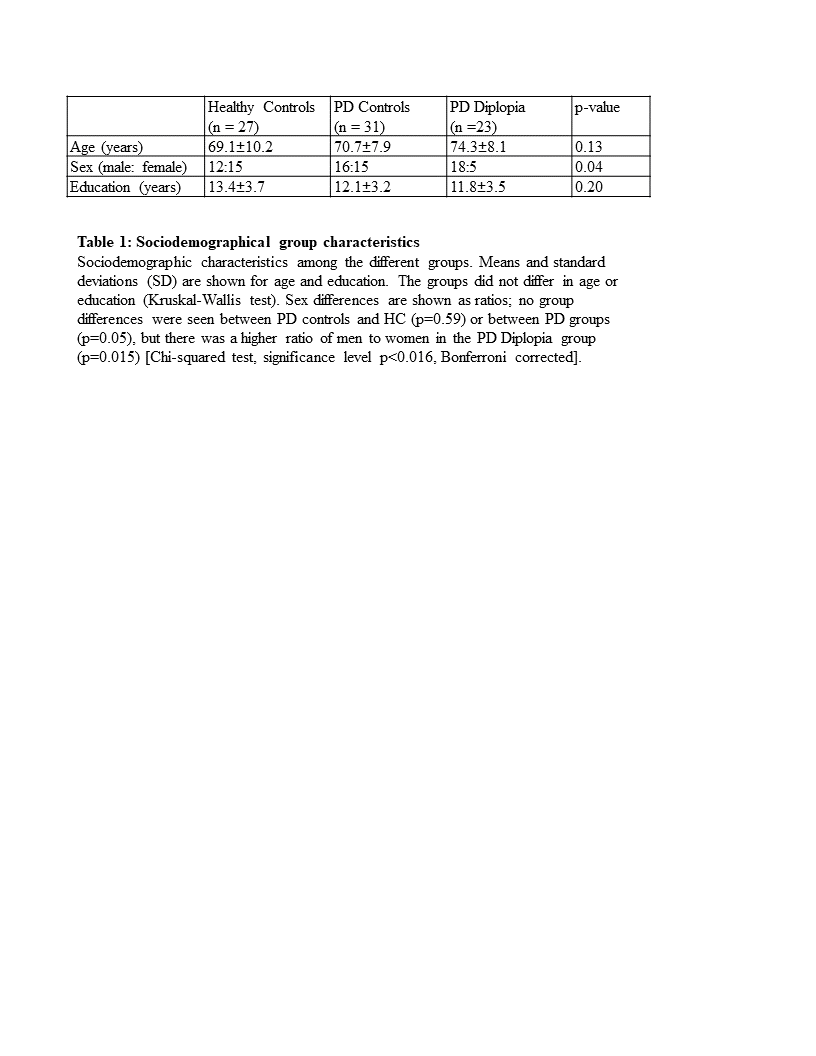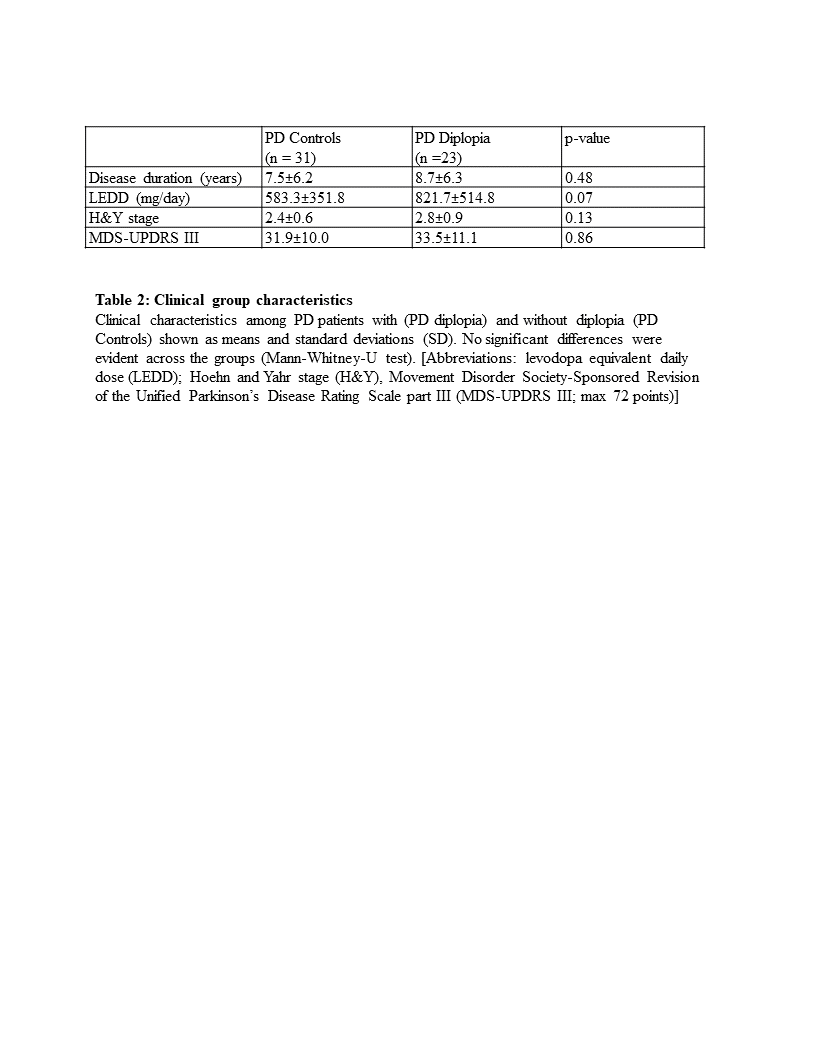Category: Parkinson's Disease: Non-Motor Symptoms
Objective: In this study, we investigated Parkinson’s disease (PD) patients with and without diplopia using motor and non-motor assessments, including detailed neuropsychological testing. We hypothesized that PD patients with diplopia exhibit impairment in domains related to visuoperceptive and visuospatial function.
Background: The presence of visual hallucinations in PD has been identified as a significant predictor of dementia and has been found to be associated with a more rapid cognitive decline over time [1,2]. We found that the presence of diplopia was a predictive factor for visual hallucinations in PD patients [3]. It is not known whether diplopia is associated with cognitive impairment or other non-motor symptoms in PD.
Method: We investigated 54 non-demented PD patients with and without diplopia and 27 healthy control subjects for visual disturbances, as well as motor and non-motor symptoms. All participants underwent a detailed neuropsychological test battery assessing all major cognitive domains. Visuospatial abilities were further evaluated with subtests of the Visual Object and Space Perception Battery (VOSP). The two PD patient groups did not differ significantly in age, disease duration, motor symptom severity or frequency of visual hallucinations [table 1; table 2].
Results: PD patients with diplopia had greater impairment in visuospatial function and object perception compared to PD patients without diplopia (p=0.005 and p<0.03) and healthy controls (p=0.00002 and p<0.001) [figure 1]. Global cognitive function and the cognitive subdomains executive function, memory, attention, and language did not differ significantly across all three groups.
Conclusion: The presence of diplopia in PD is associated with cognitive impairment in visuospatial and visuoperceptive function. Cognitive correlates of diplopia and visual hallucinations overlap and indicate neural correlates in the temporo-parietal cortices. Timely and appropriate treatment of diplopia in PD might prevent more severe visual symptoms in PD and should be investigated further.
References: [1] D. Aarsland, K. Andersen, J.P. Larsen, A. Lolk, P. Kragh-Sørensen, Prevalence and characteristics of dementia in Parkinson disease: An 8-year prospective study, Arch. Neurol. 60 (2003) 387–392. [2] D. Aarsland, K. Andersen, J.P. Larsen, R. Perry, T. Wentzel-Larsen, A. Lolk, P. Kragh-Sørensen, The Rate of Cognitive Decline in Parkinson Disease, Arch. Neurol. 61 (2004) 1906–1911. [3] K.A. Schindlbeck, S. Schönfeld, W. Naumann, D.J. Friedrich, A. Maier, C. Rewitzer, F. Klostermann, F. Marzinzik, Characterization of diplopia in non-demented patients with Parkinson’s disease, Parkinsonism Relat. Disord. 45 (2017) 1–6.
To cite this abstract in AMA style:
W. Naumann, J. Gogarten, S. Schoenfeld, F. Klostermann, F. Marzinzik, K. Schindlbeck. Parkinson’s Disease patients with diplopia exhibit visuospatial and visuoperceptive impairment [abstract]. Mov Disord. 2020; 35 (suppl 1). https://www.mdsabstracts.org/abstract/parkinsons-disease-patients-with-diplopia-exhibit-visuospatial-and-visuoperceptive-impairment/. Accessed January 7, 2026.« Back to MDS Virtual Congress 2020
MDS Abstracts - https://www.mdsabstracts.org/abstract/parkinsons-disease-patients-with-diplopia-exhibit-visuospatial-and-visuoperceptive-impairment/



